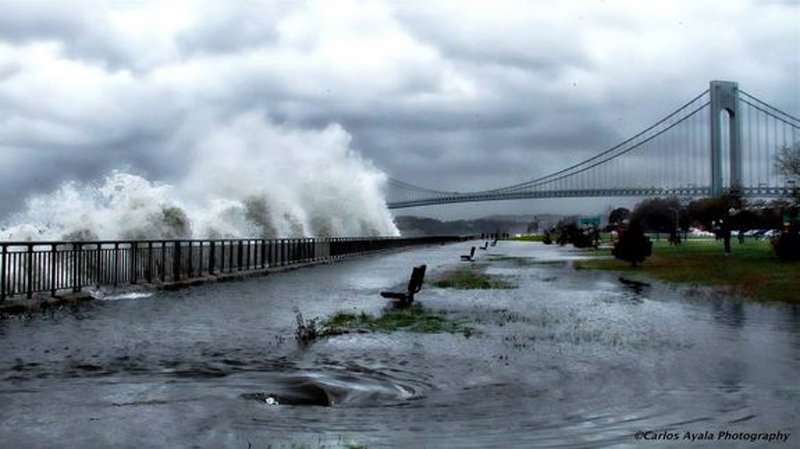Why Disasters Like Sandy Hit the Elderly Hard

NEW YORK — Heat waves, storm flooding aggravated by rising sea levels and other extreme events associated with climate change can affect everyone when they hit, but the danger isn't shared equally.
One segment of the population — the elderly — is particular vulnerable when disaster strikes.
In Louisiana, about 71 percent of those who died as a result of Hurricane Katrina were older than 60, and nearly half were older than 75, according to a 2006 federal report. About two weeks after Hurricane Sandy hit in 2012, the New York Times reported that close to half of those who died in the storm were 65 or older. Many of these elderly victims drowned at home; others died from storm-related injuries, hypothermia and other causes.
Heat waves are also particularly deadly for the elderly.
Older people are more vulnerable for a number of reasons, Elaine Wethington, a professor of human development at Cornell University, told journalists on Tuesday (March 5).
Elderly and alone
Social isolation often accompanies old age; for example, people retire and may become more limited in their activities.
Sign up for the Live Science daily newsletter now
Get the world’s most fascinating discoveries delivered straight to your inbox.
"Social isolation puts people in a situation where they are predisposed to be more vulnerable to the risks of a disaster," said Wethington, who has studied how climate change will affect an aging population as part of an initiative sponsored by Cornell's Roybal Center.
"Social isolation is at least partly driven by choice and preference. It is our habit of living," she said.
As part of a desire to maintain their independence and do things for themselves, older people may be reluctant to seek services or ask their children for help out of worry that they're bothering them.
"This is a very powerful motivation; those of us who interact with older people on a daily basis realize how powerful it is,"she said.
But social isolation can leave older people without help in times of crisis.
An aging population
The issue is growing with this population. In 2010, about 13 percent of the U.S. population was 65 or older. By 2030, the U.S. Census Bureau projects the elderly segment of the population will grow to close to 20 percent.
People who live alone earlier in their lives, in middle age and older adulthood, are more likely to become isolated in old age. And the proportion of the U.S. adults now living alone, a demographic group dubbed "singletons," is at a record high.
Florida received a wake-up call in 2004, when hurricanes Charley, Frances and Jeanne struck the state in a stretch of six weeks, Wethington said. [A History of Destruction: 8 Great Hurricanes]
These disasters revealed three lessons: First, older people tended to live in the most dangerous places, such as retirees attracted to the beach or the elderly poor who lived in flood zones. Second, older people were the least likely to evacuate. (Often, the elderly can't drive or find taking public transit difficult.) And, finally, older people were disproportionately likely to die, she said.
Protecting the elderly
In response, there are efforts in Florida to map locations where the elderly live and empower community local organizations to reach out to them, she said.
A similar effort happened to some degree prior to the arrival of Sandyin the New York City area. Senior centers sent their case managers door-to-door checking on clients and were able to evacuate some people, she said.
But there is need for considerable improvement. Unfortunately, agencies and organizations that want to help don't have a handle on the addresses within the New York City area where older people live, Wethington said. Evacuation centers were also reportedly not well equipped.
Planning ahead
Family or others close to the elderly can help with preparation by engaging them in disaster planning.
"Some of this is the repetition factor. Just keep repeating it,"she said of disaster plans.
She also offered a word of caution to younger people: "We'd be well-advised to think about where we are moving when we retire."
Follow LiveScience on Twitter @livescience, Facebook or Google+. Original article on LiveScience.com.











